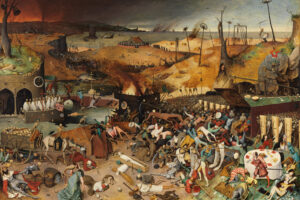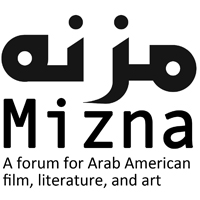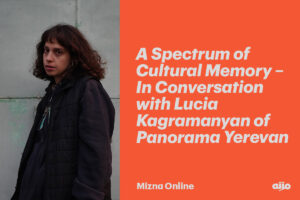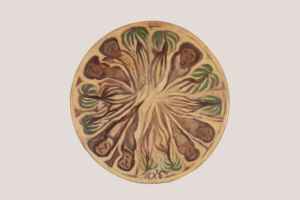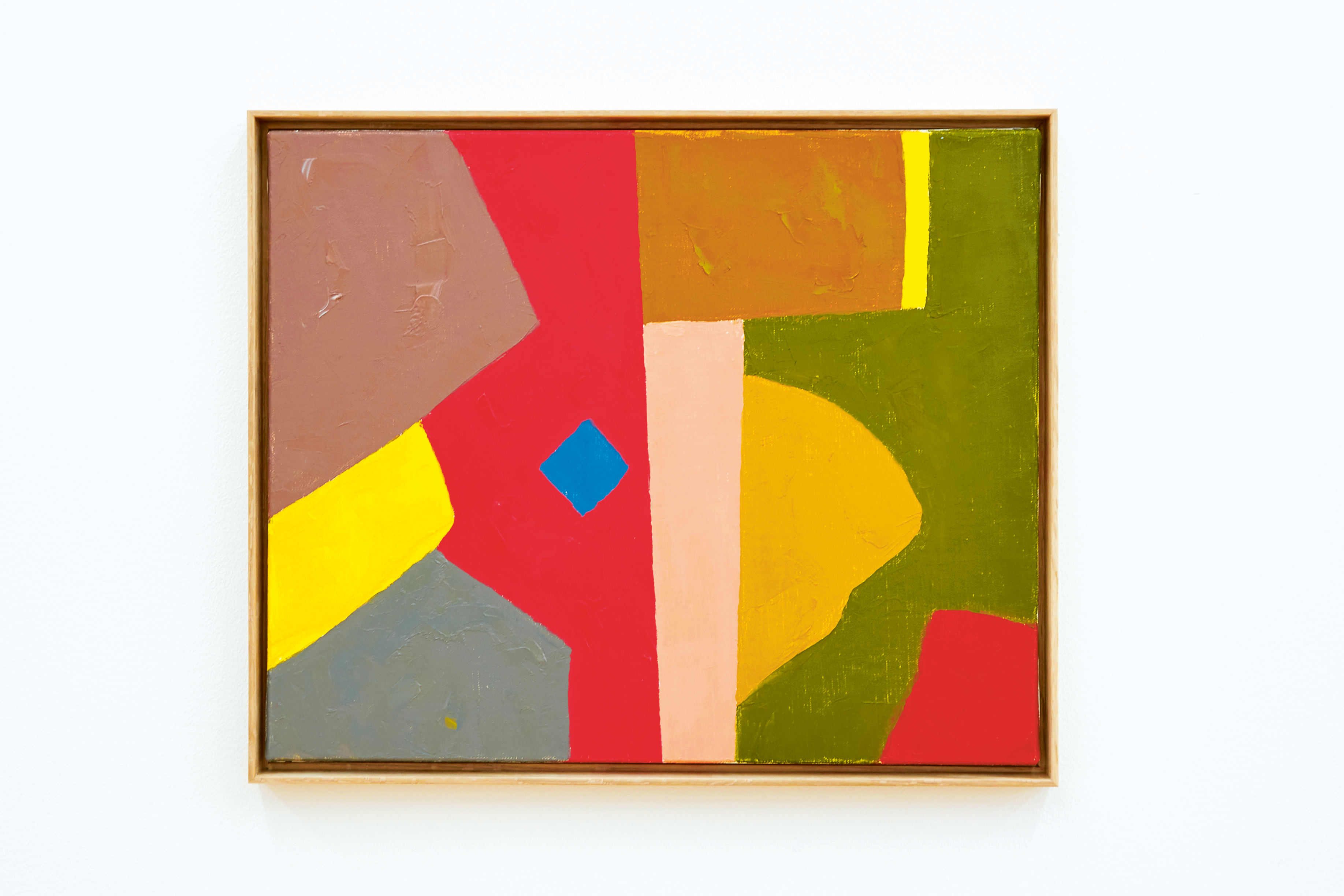
November 14, 2022
For Etel
Etel Adnan passed away last year on November 14, 2021 at the age of 96, leaving behind a wealth of prose, poetry, and artworks. Mizna asked writers and artists who have been impacted by Adnan’s life and work to contribute works for a digital feature.
This digital tribute accompanies the summer 2022 issue of Mizna which features Adnan’s artworks and a number of written works in memory Adnan’s legacy.
Read Tribute Pieces:
Nicole Olweean
Andrew Riad
emet ezell
leena aboutaleb
Mohamed Tonsy
Farah Kader
Shirine Saad
Nicole Olweean
While she is celebrated, rightfully, for her activism and potent creativity, I have been most influenced by Etel Adnan’s fearless nurturing of multiplemany identities within herself and within her work.
I am Arab-American. I still struggle to say or write this fact and believe it fully without feeling that I steal something from someone else by claiming it. I am third generation Lebanese and half European. I have a vaguely Muslim father and a Catholic mother. I am white. The little Arabic I speak I speak very badly. My heritage has always been peripheral; dancing dabke at weddings, eating kibbeh nayyeh for holidays, turning the delicate pages of my Jido’s Quran. I often question myself as a writer—indeed, my writing seems to question me: Iis it your place to write about Lebanon? What do you know about war? Do you exaggerate your Arabness?
Etel Adnan reminds me that these questions, while responsible in some contexts, are mostly foolish in the realm of art. She shows me that to wish for one unquestionable identity is to waste an opportunity to love one’s multiplicity. She was also raised with mixed heritage, mixed culture, and mixed religion. She knew many homes, and watched many wars unfold. She saw people with whom she identified do terrible things to others with whom she identified, and then she watched the tables turn. Adnan admitted that being an artist is full of insecurity, but if she ever questioned her authority to explore the contents of her own identity, her work does not betray this. When I feel ungrounded in myself, Adnan’s work gives me permission to be everything I am and dares me to be nothing less. She makes it obvious that blood is not the only reason to care deeply about bloodshed, and that a homeland can live on, even in one who has never seen it. She reminds me that what we connect with does not always have to make sense or be traceable in our lineage. She reminds me that the periphery is a built-in feature of life, that it holds us, that by definition we must exist within it,that it can draw honest art from its center.
As an American, as a Lebanese woman, as a writer, as an artist, Etel Adnan will always reflect my ideal self back at me.
Andrew Riad
For years, I’ve attempted to make sense of my identity. I’ve tried to dissect it and surgically assess how it operates, the ways in which it functions, how the world has treated it and, in that, how to tame it so as to not let it be too much of anything. It wasn’t until I met Etel Adnan, first through her poetry, and later again through her visual art, that I required nothing from my identity but to celebrate it, and with that, to allow it to just exist. I refer to ‘meeting’ Adnan through her work because that’s what it feels like when I enter her world. When I first met her in writing, she taught me how to live. When I met her again through her visual art, she taught me how to consume all of life and celebrate it. When Adnan went to heaven, I dedicated my day to her, woke up in her world, took a trip to the Guggenheim and entered her world there in her exhibition, Light’s New Measure.There I spoke to her, confided in her, listened to her tell me of all the colors she had tasted, how she was birthed from the sea, and how she existed and remains existing in multiplicity. In Sea and Fog, she says that a “drop of water plus a drop of light have arrived before language”. It is in this pre-arrival of language, that I find refuge. It is because of Adnan that I relinquish any vexed apprehensions or curtail my celebration of life. Adnan’s work and modes of being go beyond informing my work and practice intertextually. She exists continuously around me, reminding me that I too exist. In that reminder, I am able to return to water and light, and I be, becoming, become.
emet ezell
our displacement, our migration, has wings—
and ghosts, with whom, when trusted,
we are permitted to speak. yes. we must
call a genocide a genocide,
then enter the doorway of poetry
through protest.
you have left us a string of yellow red purple blue suns,
which we follow into the gaps of collective memory,
illuminated. here, in this desert, you teach us to listen.
to strengthen sensitivity, to harness attention,
to never collapse into a single image.
and isn’t that the queerest thing?
we are a porous material, you say.
5 months in one place.
7 in another.
shuffling borders in your mouth.
the question of language, the question of home.
we don’t have to be visible to inhabit our destiny:
your attunement
to this world
and the next—
phototaxis.
gratitude for your lineage.
gratitude for your call to live pursued by wonder,
unfolding the infinite into place.
leena aboutaleb
,the Oracle
Words from Etel, restructured.
Living here is an act of submission to the worst. For a week now I’m trying to convince myself that there is something eternal about anything that has existed. If love hovers over cemeteries it is not so much because of some morbid instinct than because of a decision taken by our remaining gods. One swallow, rot to the point of depression where any sight of mountain or sea looks like deliverance. People proceed by myths and beliefs. Paradise lost doesn’t amount to—
Today I see eternity everywhere. In their own cemeteries, it looked both infinite and eternal, though it left me . Appreciate the breeze, look straight ahead, close the door, open the door, exit. Drive down the coast, look at the ocean, admire it, reach the other side, feel happy, let go of the day, day-dream, put the cheese back into the refrigerator, wash one’s hands, dry them, let go of the day.
in this emerald lake hierarchies of heavens [hauntings] a palm overnight [a falling], garden fever [eternity until the end] swelling [turn into river] the moon has pass away, the death of birds calling another new sun born from antimatter. present-blood-stained SUN presiding in PRISONS, Palestinians are [ ] space-craft heading for the moon, singing their own requiem. I am absolute order, absolute power, absolute efficiency. I’ve reduced all truths to a formula of life and death.
the may outlast our divinities…our words don’t suit prophecies anymore; that power is left to other species. their restlessness carriesa phosphorescence we’re not able to hear anymore…
not seeing rivers is another way of dying.
Love creates sand-storms and loosen reality’s building stones. its feverish energy takes us into the heart of mountains; a frozen moon illuminating the sea commits self regularly with primordial violence and fanfare. She moos. We believe in the uniqueness of these times as in the originality of the sky. The tribe needs to[o]. “Because I belong to the Palestinian Resistance” Sitt Marie Rose, the whore, the alter, the High Priestess.
“We came to transmit the shimmering from which we came; to name it we deal with a permanent voyage. the becoming of that which itself had become.”
we live in imaginary countries [the vanquished search for [of] the vanquished] that food will soon be unavailable, that the end will end. Love is the only salvation I know of. We return home in tears, winds, shattering the order. It was Beirut all over again. the solitude of every fragment of Being,
I love matter. I swim in atoms when I am in the sea. I love the moon because it is cold and barren, and I love a warm bath when I come back from it. I am of those who kiss the dust not by womanly obedience but because it is part of the earth. And the big, big clouds, like candy, come down my throat.
Behold, beholden—Mountains move secretly, stars betray their order, rivers and flowers are women in love…I am being created in a seabed, in the stars, in the image of mercy.
Mohamed Tonsy
I’m a slave to chronologies. So, when someone first suggested Etel Adnan’s work, I started from what I perceived as the beginning, Sitt Marie Rose.
A line that struck me was:
“They said ‘We’ve got to talk to you.’ And I understood that, with those words, I was leaving the world of ordinary speech.”
The book passed like a hallucinogenic blur with vivid vignettes rising to the surface, powerful but fleeting. Images of life amid destruction provided a solemn perspective that meshed well with my bleak teenage brain. At the time, I could only grasp a fraction of what was on the page.
I returned to the book in 2012 when I had just moved to France, largely to escape Egypt. I couldn’t finish it and thought that I simply outgrew it, feeling that I had witnessed enough terrible atrocities that will forever remain present. The delicate prose was crushed under the weight of my expectation that nothing could convey what I felt.
It wasn’t until a few years later that I came across Etel’s visual art. The vast landscapes, conjured with such vivid colours, broke all sense of realism and seemed to convey grains of undeniable truths. Flashes of yellow, green and orange made the landscapes seem impossible. Nature often feels that way, I told myself. It was entirely unquantifiable, unimaginable, even while gazing at it. It reminded me of the Sinai mountains’ orange dust at dawn. This is a mountain, I told myself, as if that could explain the feeling of being so small, yet so infinite in my ability to see the rocky mountains anew.
Etel Adnan conveyed what cannot be seen all at once. Looking at her drawings, I missed Egypt desperately. The simplicity of the compositions conveyed an intimacy that seemed to be rapidly disappearing from my life. Was the dust orange, or was that just the early morning sun?
When I moved to Edinburgh, I carried books of her work with me. Traversing Etel’s artwork, I wasn’t looking at the landscapes she drew anymore. I was remembering how close and visceral a connection to a land can feel. Territories are only delimited by political ideologies and discourse insofar as we forget how to look at them anew, as knowable but intangible spaces. I’ve seen these mountains before, I thought, as images I believed had faded from my mind.
“Besides the many things they are, mountains are a language, probably the one most familiar to me.”
Etel’s work taught me that the places we come from aren’t just names on a map, territories bound by constructed lines. Chronologies tend to only emphasise what is past, but to remember is to see. Arabic doesn’t rear its head often in Edinburgh, but when it does it can move mountains. And Etel’s work will find me on mountains, in the sea, under the shade of a sycamore, to remind me of what it means, and what it takes, to carry worlds inside of me.
Farah Kader
We spend much of our lives lamenting what we lack. Rather than act on our desires, we envision the people we want to be, the objects we hope to possess, the lands we don’t inhabit, and the talents we were too scared to nurture. Maybe it’s because we believe the lie that we’re not worthy of any of it. And eventually we fear what we want. We fear wanting.
Etel Adnan’s art found me at a critical time in my life. I could feel myself losing purpose, with no strong sense of self tied to heritage, language, or land. The grip I had on a professional and artistic future was slipping. I fell into a cycle of ritual that was severed from all of my creative ambitions; a numb, vacant space. When I came to know Etel, I saw in her work a version of my emptiness, but somehow it was no longer a fault, but an entryway for something new.
Etel’s paintings and writing drew heavily from nature, and like so many exiles who lack the luxury of living on the land that inspires them, she often relied on her mother’s stories and memories to recreate long-gone places. This is a theme throughout much of contemporary Arab art and literature: there is dispossession, then obsession, and an omnipresent sourness that just won’t leave our tongues.
Yet, that taste of resentment is missing from Etel’s work. Her creations, instead, are cleansing, , particularly the visual “inner landscapes”— a name she gave to the abstract and experimental works combined from memory, reality, imagination, and emotion. Pastel color palettes and soft shapes on the canvas, fragments of prose and verse that emit light and sweetness throughpain. Beirut, the land of her birth, and Smyrna, the land of her mother, no longer in her bodily presence but ever-present in her mind. Etel would stare at Mount Tamalpais through a Bay Area window and imagine all the angles she could not see. She would alternate bricks of the boldest colors up to the mountain peak, all the time dreaming of Beirut and Smyrna.
Rather than obsess over every detail, she abstracted the land, presenting an honest image of her own memory gaps, the imperfection of her knowledge. She knew she could not resurrect the places she saw destroyed by war, but she constantly sought them, the hand following the heart whether holding a pen or a paint brush.
I now enter my thirties, Etel’s approximate age when she first picked up pigment on her brush to begin “painting in Arabic,” instead of writing in the language of colonizers. Never completely comfortable with the Arabic language, she built an academic and writing career in French and English, but still found the space within herself to renew the link once again. She studied calligraphy and the Hurufiyya artists, wayfinding through mountains obscured by the haze of time.
I often watch Etel’s interviews and the joy that filled her eyes as she talked of a Beirut she no longer lived in, spoke breathlessly about her mother’s Smyrna in the language of their colonizers, like I do every day. That used to be a source of shame, the inadequacy of my Arabic and the severance from my family’s native Palestine. But Etel teaches that even with missing details, faulty lines, misspoken phrases, creations from within those landscapes are worthy. That could be all we need to keep on.
Etel and Simone : Heliocentric
by Shirine Saad
All that you touch
Octavia E. Butler, Parable of the Sower
You Change.
All that you Change
Changes you.
The only lasting truth
Is Change.
Partners in life and art, steeped in Islamic and European philosophy, Etel Adnan and Simone Fattal traveled the world in exile, searching for new landscapes and ideas. But the images they returned to again and again were rooted in the rust soils of Mount Lebanon, the cerulean horizon of the Mediterranean, and mythologies from Mesopotamia to ancient Egypt. In light of Etel’s recent passing and the loss of a spiritual guide, their radical and prolific love affair between the sea, moon and sun, lingers as an invitation to decolonial, queer liberation and resistance.
The sun. Etel Adnan’s first artistic project with her partner Simone Fattal dates back to the early 1970s, when, soon after meeting in Beirut, they painted a yellow-hued Mount Lebanon imbued in a soft light. Their lines were carefree and sensuous, the solid peak evoking erotic forms. This landscape set the tone for a lifelong yearning for their beloved mountain and the sunshine of a lost Eden. Over the following decades, Etel would paint mountains, suns, and skies repeatedly, obsessively, as if to invoke some celestial force to offset the unfurling devastation.
The moon, sun, and stars are objects of intense fascination at the turn of the colonial era and the space age. Sun Ra lands in Egypt, where his rays of free jazz commune with the ancient astral gods. Arab artists and architects explore cosmic Islamic motifs, astronomy, and astrology, reinventing sci-fi sensibilities from the cradle of civilization. These futurists fantasize on alternative dimensions, critiquing wars, environmental disaster, scientific and capitalist advancement, and colonial culture, mapping new imaginaries. Space is the Place.
As the superpowers race to space, the Arab world sinks into strife and mass migrations amid the 1967 Arab-Israeli War and regional power struggles. In 1975, watching Lebanon burn, Etel Adnan writes Sitt Marie Rose as a guttural response to the violence of men and their meaningless blood bath. An oracle of struggle, a shaman of poetry and mysticism, Adnan sets the tone for the somber fate of her homeland, alchemizing a vision for an aesthetic of solidarity and resistance rooted in love—an urgent call for Palestinian resistance that will later lead to her receiving death threats.
The unspeakable horrors of 1975, depicted in vivid detail in Sitt Marie Rose, give birth to an absurdist, abstract, absurdist, extreme experimentation with words, signs, and symbols: The Arab Apocalypse, an exploded poem fueled by the raging civil war. Its fifty-nine pages correspond to the fifty-nine days of the siege on Tal-el-Zaatar, a Palestinian camp in the outskirts of Beirut destroyed by the Lebanese Forces in 1976:
O Camp of thyme and verbena carrion-smelling Tell Zaatar
. . . . . . . . . . . . . . . . . . . . . . . . . . . . . . . . . . . . . . . . . . . . . . . . . .
The BIG RED SPOT of Jupiter is a storm. Matter is desperate.
Beirut is eaten by civil war children listen to the roar of cannons
matter in fury turns in circles in the big void of the planets
Beirut wallows in misfortune HOU ! HOU ! HOU ! Beirut bleeds
matter circles in tornadoes on nebulae’s surfaces O Milky Way!
more blood than milk more pus than wine
Jupiter defies the sun a yellow sun makes love to Jupiter
hatred is filled with phosphorus jealousy wears a black ribbon
Jupiter gets away from the sun and runs back to it: it is a hunting dog
any Arab crowd is a crowd of poets. Listen to its maledictions!
Incandescent planets darkly flutter in the heart of the war
geomagnetic forces dry up our regions We implore the rain
we receive solar particles We want to see We are blind
We go in hordes to praise the Lord the solar Face is pitiless
Jupiter and the sun fight over Gilgamesh’s mortal remains
The sun blazes through the broken verses, raging through planets, moon, and stars, across ancient Egypt and Babylon, Palestine and Syria, ravaging, lethal, fusing movements of massacre and annihilation. Everywhere is chaos. The poem is visionary in form and content, igniting a new language for post-modern dystopias—an era of severe disruption where existing forms no longer hold meaning.
“In my twenties, I heard the French say that Arabs were the children of the sun, les enfants du soleil,” Adnan told Lynne Tillman in an interview in Bidoun: “It was said with disdain—Arabs were irresponsible, grown-up children.” Solar power becomes a metaphor for life and death, like the fire stolen by Prometheus, presaging new eras of decadence and destruction. “Because the sun is dangerous. It can kill you, burn you. But the sun is also life.”
Exile and the search for sundrenched littorals transport Etel and Simone to Sausalito, Northern California, in 1980. There, basking in the aura of Mount Tamalpais, they found the Post-Apollo Press, creating a platform for experimental poetry and philosophy in the tradition of the artistes engagés of Arab Modernism. Life, love, nature, protest, teaching, writing, painting: these are facets of a profound commitment to art and total freedom. From afar, they remain connected to Beirut. They respond to movements of oppression, delve deeper into the mythology of the fertile crescent, in dialogue with The Epic of Gilgamesh or Zaat El Hima, Hesiod’s “Work and Days,” Alexander the Great’s conquests, the pyramids of Ra, Arab Mmodernism, and the Palestinian intellectual tradition. They continue their correspondence with Jalal Toufic, Adonis, Janine Rubeiz, and other old and new friends. Making art is the body’s impulsive response to death; loving in the apocalypse is a mad act of defiance. “Life is stronger than war, and love is stronger than death,” Fattal told me at the 2019 opening of her exhibition Works and Days at MoMa PS1.
Enrolling in art school in 1988, Fattal discovers clay as a living force, shaping it into the monumental figures of archeological ruins. Her first sculpture, Torso found in Today’s Downtown Beirut (1988), is a colorless block of alabaster carved into a bust, an echo to the fallen bodies of the city.
Then begins an abstract sculptural archive in dialogue with her lover’s work. While Adnan’s writing cuts into the tragedy of human existence, her knife paintings, leporellos, tapestries, and watercolors are vibrant landscapes of longing and plenitude—suns kissing seas and hills, squares embracing curves, bursting with desire. As death looms and millennial cities are wiped out, theirs is an archive of remembrance, an homage to the legacies of Eastern civilizations and their mysticism, a stubborn denial of amnesia and erasure. It is a poetic and conceptual language that transforms chaos and loss into a boundless epic of love.
Throughout the years, Fattal molds an endless series of rugged, delicate objects—sirens, horses, trees, fruits, lions, houses—revisiting ancient myths from Mesopotamia and the Mediterranean, dominated by the warrior sculptures of Gilgamesh, Enkidu, and other epic heroes. Their massive bodies remain fragile, perched on frail legs in uncertain equilibrium. They are rusty, their skins bruised and gnarled, as if rising from the earth. They are monuments and totems, witnessing the violent loop of genocide and environmental catastrophe.
“‘The dead should come back and fight the war instead of us’ Etel wrote about the civil war in Lebanon,” says Fattal in an Apartamento interview with Jinan Khayyer. “When I remembered that I created these standing warriors (such as The Wounded Warrior, 1999) as a witness to this fight.”
Homesick, on a quest for the sun, sea, and mountains, the couple travels to Paris, the Greek coast, Italy, and back to California, engaging with new artists and movements. Torn from their city, free to love, think, and create, they bring together painting and poetry, philosophy and politics, sculpture and writing, love and resistance, life and art, shattering binaries. Their life unfolds outside the oppressive burden of the Arab patriarchy that dictates and controls our bodies, minds, and desires. Their union is an embodied rebellion, a testament to the power of queer love, fearless feminism, and intellectual courage. Tracing paths to an ancient and Islamic past, reinventing the traditional forms and colors of their Levantine vernacular, they create a poetry of decolonization where mysticism heals the devastation of exile and the trauma of a lost homeland. A cosmic arch, a constellation of hope, a revelation for a utopian future.
Of Cities and Women, written in the early 90s as the Gulf War loomed, is a series of letters penned by Adnan to Fawwaz Traboulsi for the special Arab Women–themed issue of his magazine Zawaya. It is a free-flowing feminist meditation inspired by trips to Barcelona, Greece, Aix, Beirut, and other places. Adnan seeks women in empty streets and sleepless nights, contemplating the horizon and mountains. Women are everywhere, their bodies nude, free, dancing, rebellious, erotic, mad, assaulted, ailing, elderly, or youthful, moving in the supernatural light of dusk or dawn.
“There is no more nature, I tell myself, in the near metaphysical, ecstatic sense of the word,” writes Adnan at the Mont Sainte-Victoire, recently devastated by a fire. “And if there is no ‘Nature,’ there is no ‘Woman.’” She turns to the cosmos as a space for mystical contemplation.
Later, riffing on Picasso’s Guernica, she writes, “He knows that the original Power is of a feminine nature, and that women, like him, when exiled from Power, are thrown into chaos . . . Women is war, and counter-war.” As the Arab Apocalypse returns with Iraq’s invasion of Kuwait, Adnan reflects on thirteenth century Sufi philosopher Ibn Arabi at a seminar in Spain. “Divine wisdom, thought Ibn Arabi—before Dante, and those who followed him—is feminine; and human love is always a scandal because it is always a necessity, a model of divine love.”
Landing in a dystopian Beirut recovering from the civil war, grieving the loss of her friend, the gallerist Janine Rubeiz, Adnan turns again to the sea for solace. She is a woman, of course, huge and open and fluid and osmotic, bathed by the sun. Woman is the sublime, ecstatic love, oneness. “Woman is not death.”
This thirst for love, nature, colors, and words carries the lovers throughout their wanderings, through strife and exile, producing a vast body of art and writing. When, at the age of ninety-four, standing on the precipice of death and yet more apocalypses, alienated from her beloved Beirut, mourning the cities and lives in Syria, Adnan begins to lose faith.
In Shifting the Silence, written before the Beirut blast, as the COVID epidemic wipes out countless lives, she writes, “And having more memories than yearnings, searching in unnamable spaces, Sicily’s orchards or Lebanon’s thinning waters, I reach a land between borders, unclaimed, and stand there, as if I were alone, but the rhythm is missing.”
Adnan has composed a requiem for the Venice Biennial, with “A new angelic order of astronaut-angels, trumpeting their existence.”
“Writing that requiem,” she writes, “I had to hear the representative of those humans who claim that they are tired of the world’s situation and that they will be looking for a new Revelation. But the choir kept telling them that the Revelation is indivisible. It’s one. It’s likely what Nietzsche meant when he mentioned, ‘the eternal return of the same.’”
Etel has left us. Beirut is a giant hole, a city in ruins. The sea itself has exploded and there is nowhere left to go. Bombs are falling on Gaza, on Syria, on Kiev. Baghdad’s and Kabul’s gardens and palaces are sinister battlefields. The virus has annihilated millions, the earth is burning, migrants perish crossing borders and seas, refugees and the houseless lie in our front yards. The curse unleashed in ancient millennia continues to wipe out lives and hopes in its wake. How do we fill the immense void Etel left behind? Our fallen poets and thinkers, witnesses of our horrifying war, have gone. But look around—their spirit is here, in the poetic resistance from Sheikh Jarrah to the streets of Beirut, in solidarity movements from Sudan to Brooklyn.
leena aboutaleb is an egyptian + palestinian ghost bred in between baltimore and kuwait. she is currently a graduate student for media and communications at the george washington university where she spends her time imagining the multiverses.
emet ezell is a poet, community organizer, and public song leader. Their chapbook Between Every Bird, Our Bones, won the 2021 Gloria Anzaladúa Prize. Their writing has appeared with: Waxwing, Muzzle, Hayden’s Ferry Review, and PM Press. Rooted in diaspora, emet makes their home between Berlin and the US South.
Farah Kader is a Palestinian American, and was a recipient of the 2017 Palestinian Youth Movement’s Ghassan Kanafani Writing Prize and a 2019 Hopwood Graduate Award for poetry. Kader’s work has been published in Mizna, Orion Magazine, Electric Literature, and Narrative Magazine.
Nicole Olweean is a graduate of the University of California, Riverside’s MFA Creative Writing program. She currently resides in her home state of Michigan, where she works as a community health worker and climate advocate. Her work has appeared in Sukoon, Menacing Hedge, Fish, and others.
Andrew Riad is a Coptic Nubian Egyptian whose work is continuously and unequivocally centered around and rooted in the [de] and [anti]colonial. Andrew attempts to reconcile colonial reverberations and presents, in an attempt to [re]imagine and [re]claim through the subaltern. Currently, Andrew is working on a collection of poetry that attempts to [re]imagine “The Egypt.” He is also the founder and creative director for The Colonized Project on Instagram.
Shirine Saad is a Beirut-born multimedia storyteller, programmer and DJ focusing on culture and social change. She teaches Arts Journalism and Criticism at Brown University’s Arts Initiative, and is a curator-in-residence at Brooklyn venue Public Records. She is the founder of Hiya, a cultural series amplifying the radical feminist voices of the SWANA region.





